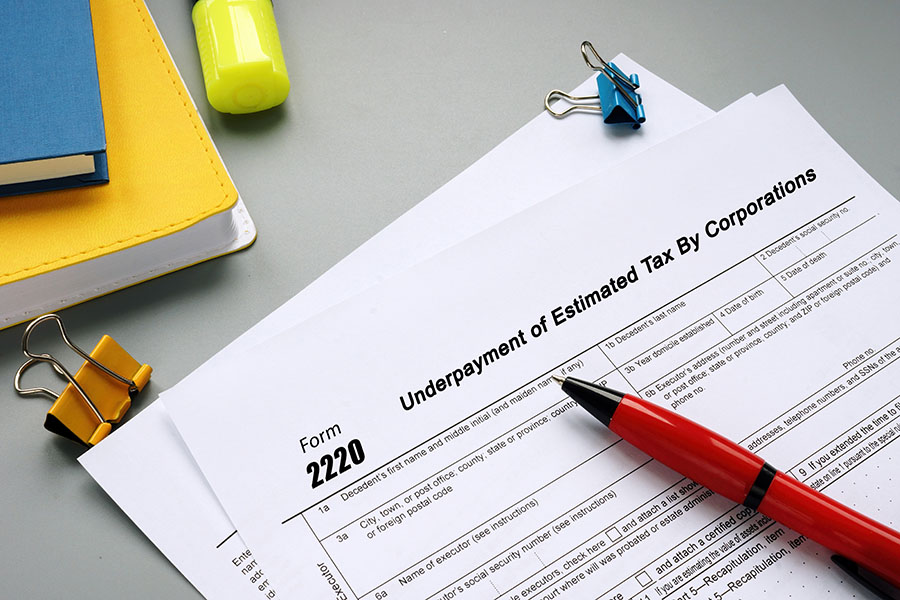
The bullwhip effect occurs when small changes in customer demand cause large changes in ordering and inventory upstream in the supply chain. The name comes from the physics of using a whip—a smaller force or movement at one end can result in a much more powerful movement at the other end.
In this article, we’ll discuss this phenomenon to cover what the bullwhip effect is, how it works, what causes it, and examples.
Key Takeaways:
- The bullwhip effect occurs when changes or new trends in customer demand result in large effects further up the supply chain.
- Unpredictable customer demand, lack of communication, incorrect interpretation of data, and fear of missing out can cause the bullwhip effect.
- The bullwhip effect can result in overstocking or understocking, and wasted time, money, and other resources.
- Retailers can prevent the bullwhip effect by communicating with suppliers and manufacturers, standardizing purchase orders, and optimizing operations.
How the Bullwhip Effect Works
If a retailer notices an increase in demand for one of its products, it will order a larger amount of product from its supplier or distributor during the next purchase order. In turn, the supplier will place a larger order of its own with the product manufacturer. Ordering a larger quantity of a product that is selling well is a normal aspect of business and supplier management.
The bullwhip effect comes into play if a retailer or supplier places a large order due to incomplete or incorrect information about the increased customer demand. Mistakes or misinformation increase in scale the higher up the supply chain they go. This is where the bullwhip effect becomes fully visible—when a small action low on the chain leads to large changes higher up. If this action was the result of a mistake in analyzing customer behavior, all parties in the supply chain suffer the consequences of the bullwhip effect.
Here is a simple bullwhip effect example:
A clothing retailer normally sells 50 pink T-shirts per month. However, during one month, the business owner notices that demand for pink shirts is increasing dramatically. She then orders an additional 100 pink shirts from her supplier for the next month, anticipating increased profits.
However, she has failed to recognize the real reason for the increased demand: a popular K-pop band is currently in town, and their fans have collectively decided to wear pink to the concert at the end of the month, leading to greater demand.
The concert comes and goes, and the business owner receives her 100 additional pink shirts at the beginning of the following month. However, with the concert over, pink T-shirt sales have dropped back to their usual level—leaving the business owner confused and frustrated. She now has lots of dead stock and lost income. Even worse, her supplier and manufacturers upstream in the supply chain have placed similar large orders for their own businesses, and must now deal with similar problems.
The bullwhip effect can be caused by any one of several things or even a combination of them. Many of the possible causes tie into each other and can be self-reinforcing.
Unpredictable Customer Demand
Short-term changes in buyer behavior or preference, larger retail trends, and general unpredictability in demand can result in increased demand for certain products, but the bullwhip effect is largely dependent on how the business responds to the perceived change in demand.
Forecasting customer demand (or determining the reasons for increased demand in the present) will always carry a degree of uncertainty. When a retailer notices higher demand and makes changes to its purchase ordering, this in itself is not the bullwhip effect. The effect happens when retailers become too reactive to changed customer demand. This can lead to pitfalls such as wasted time and resources, unnecessarily high storage costs, missed profits, and strained business relationships.
Retail Trends
Buyer behavior can change due to larger retail or social trends; for example, in the fashion industry, retro styles can make a temporary comeback and cause consumers to buy clothing that might normally be considered old-fashioned. A retailer might misread this as a longer-term trend and order huge amounts of old-fashioned clothing. If unsold, this move could result in long-term losses for the business.
Price Volatility
Price volatility measures a product’s variations in pricing over time. It can be influenced by anything from inflation to promotions such as discounts and sales. This can cause a perceived change in customer demand, leading to inaccurate inventory forecasts and uncertainty among suppliers. Price fluctuations, such as a retailer raising prices to combat inflation or ending their sales, can cause issues once suppliers get used to higher order volumes.
Miscommunication
For businesses, supply chain management is inherently complex and carries a degree of risk at any point in the chain. Incorrect predictions and communication difficulties at any stage can cause problems that cascade either upwards or downwards, including the bullwhip effect.
Businesses (both suppliers and retailers) may fail to share information either purposely or through negligence; examples include not communicating production or manufacturing delays, changes in buyer demand or the reasons for such, transportation issues or problems, and more. Lack of communication may cause one or more parties to take action despite having incomplete information.
Greed & Fear of Missing Out
Apart from misreading changes in demand, a retailer might also intentionally make unwise decisions about purchase ordering due to fear of missing out on a trend or even out of greed. If a business owner notices a new trend and decides to invest heavily in it without doing enough research, the business runs the risk of over-ordering from its supplier. This not only triggers the bullwhip effect but results in dead stock and wasted resources for the retailer.
What Are the Impacts of the Bullwhip Effect?
The primary impact of the bullwhip effect on a retailer is overstocking. It also has tangible effects like wasted resources and can also be an indication of the overall health and efficiency (or lack thereof) of the business.
Overstocking or Stockouts; Missed Profits
If a retailer orders too much or too little product from a supplier in response to a perceived change in demand, this results in stock levels that don’t match customer demand. If there is excess inventory, this leads to unsold products and excess carrying costs on either the retailer or supplier end (or both). If there is insufficient inventory, this leads to inventory stockouts—which result in not only missed profits for the retailer but also annoyed customers who might then choose not to return to that store.
Inefficiencies & Waste in Operations or Production
Larger order volumes from retailers will cause suppliers, distributors, and manufacturers to ramp up production. If increased production does not correspond to the actual change in customer demand, then all parts of the supply chain will end up wasting time, money, production power, and storage space creating products that may never get sold.
Impaired Customer Service
The bullwhip effect can also cause retailers’ customer service—as well as the overall customer experience—to degrade. This is especially true if there is miscommunication (or a general lack of communication) between the retailer and the supplier, causing longer lead times and delayed order fulfillment. If the required items do not get shipped on time to the retailer, then products will never make it into customers’ hands; even worse, store staff may not be able to provide satisfactory explanations to frustrated customers. This can lead to a loss of business and a decline in the brand’s reputation.
Identifying the Bullwhip Effect
Before you can take steps to prevent or address the bullwhip effect, you first need to recognize it when you see it.
Like an economic bubble, it can sometimes be easier to see the bullwhip effect in hindsight rather than as it is happening. However, there are some telltale signs you can use to anticipate the bullwhip effect before it happens:
- A change in customer demand or behavior: While this change does not necessarily predict the bullwhip effect, it is often the first step.
- The urge to respond via drastic changes: Take a step back and observe your own response to changes in customer behavior. Do you feel an impulse to change your business processes before you’ve researched the reasons behind the changes thoroughly? If so, you may be in danger of falling prey to the bullwhip effect and its repercussions.
- Fluctuating, unpredictable, or inaccurate inventory: If you find yourself with inventory levels that fluctuate significantly from month to month or inventory that is not counted accurately, be cautious. It is easy to come to incorrect conclusions based on unpredictable inventory levels, and these conclusions can trigger the bullwhip effect further up the supply chain. Proper inventory management is a good practice for your business.
Preventing & Addressing the Bullwhip Effect
Because any one of several factors can trigger the bullwhip effect, preventing or addressing the effect will need a multi-pronged approach. Fortunately, a business can apply all of these measures simultaneously, and they can prove to be effective whether you are proactively preventing the bullwhip effect or mitigating the damage once it has begun.
Share Information Across the Supply Chain
Sharing information across all parts of the supply chain (retailer, supplier, distributor, manufacturer) is the primary method for preventing the bullwhip effect. Constant and thorough communication between all stakeholders ensures that each party’s needs are addressed promptly and to the correct degree. Internal communication and collaboration within a business are vital as well; for example, different departments can share point-of-sale data, sales and inventory levels, and customer information to keep everyone updated and in the know.
Implement Order Smoothing
Order smoothing refers to standardizing purchase orders to suppliers, instead of spontaneously increasing or decreasing order volume to respond to sudden changes in demand. Retailers typically implement order smoothing by calculating weighted averages for their purchase orders, as well as using automated tools to forecast demand or required inventory and manage purchase orders (good inventory management software should contain these tools).
Reducing or eliminating the peaks and troughs in purchase orders makes operations and costs more predictable, as well as minimizing the risks of over-ordering and overstocking, excess inventory, and wasted resources.
Increase Operational Efficiency
Finally, you can help mitigate or prevent the bullwhip effect by increasing the operational efficiency of your business. This lets you adjust more quickly to fluctuations in customer demand or other changes. You’ll be able to make informed decisions and act more promptly to such changes or even backpedal if it turns out you’ve made a mistake while evaluating demand or ordering inventory. All of these will go a long way toward using your resources more efficiently.
Frequently Asked Questions (FAQs)
Click through the sections below to learn more about the bullwhip effect and its causes, consequences, and prevention.
The bullwhip effect refers to increasingly dramatic changes going up the supply chain, due to an increased or decreased order at the supply level.
The bullwhip effect can be caused by unpredictable customer demand, price volatility, misperceptions of customer behavior or demand forecasting, and even greed and fear of missing out on the part of business owners.
You can prevent, mitigate, or address the bullwhip effect by consistently sharing information across all elements of the supply chain, standardizing purchase orders to avoid severe fluctuations, and increasing operational efficiency in your business so you can better adapt to changes.
Bottom Line
Noticing new retail trends and adjusting to changing customer demands is a good thing—it means you’re a perceptive and adaptable business owner. However, you need to act on these wisely. Do your research before investing in additional stock, share information with your suppliers and manufacturers, and make your business operations as smooth, efficient, and fast as possible. These will not only help you avoid the bullwhip effect but are good business practices in their own right.





